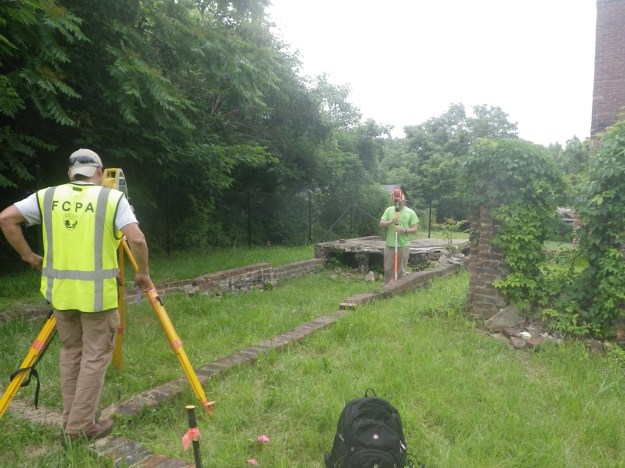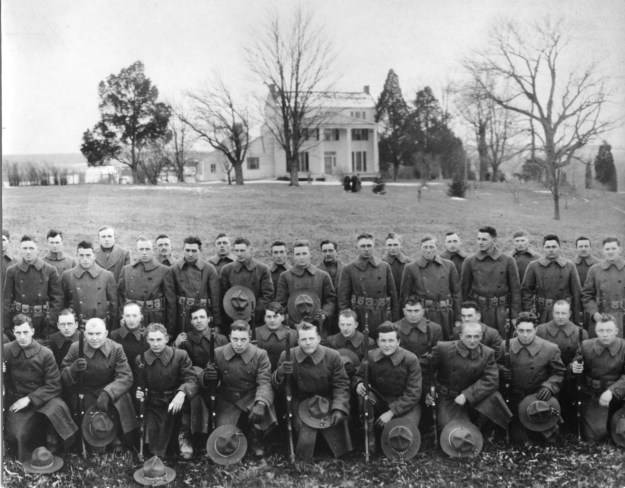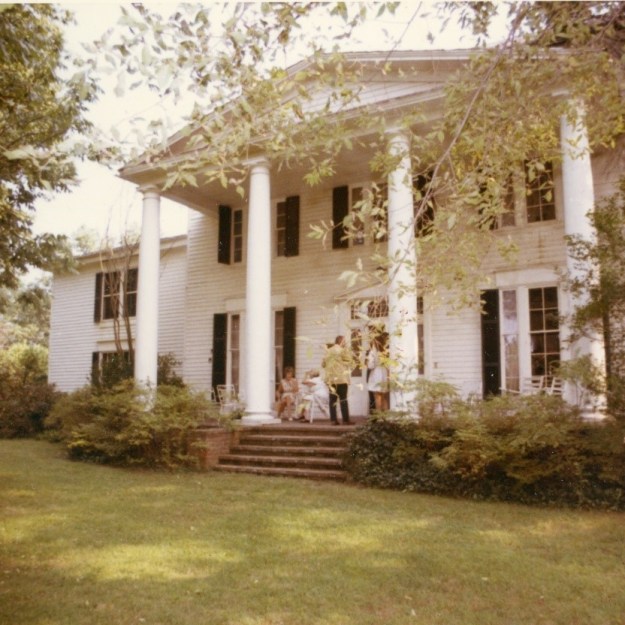 Something’s in the air at Mount Air.
Something’s in the air at Mount Air.
Over the years, there have been several archaeological investigations at Mount Air Historic Site, but the park has never been subject to a systematic investigation of the property. Now, thanks to fate and Mother Nature, it is undergoing such an investigation.
In the past, archaeologists from a private company conducted limited testing on a small portion of Mount Air prior to development of a nearby subdivision. In the 1990s and 2000s, the Fairfax County Park Authority (FCPA) partnered with American University to conduct field schools on the property, and Park Authority archaeologists later returned and recovered artifacts that dated throughout Mount Air’s history.
Recently, a tree at the park fell onto a barn structure, rendering it a safety hazard. Likewise, a tenant house on the property was deemed unlivable. Removing those two structures means the ground would be disturbed, and because of the incredible history of the site, if the land is going to be disturbed, then county and park policies mandate that an archaeological investigation must first take place. That means the Archaeology and Collections Branch is returning to the Mount Air Historic Site. This is an opportunity for archaeologists to look at the property comprehensively and to better understand the changing patterns of its use over time.

FCPA archaeologists establish grid for 2019 archaeological investigation.
Currently, the FCPA’s Archaeology and Collections Branch is conducting a shovel test pit survey. That’s a site test that doesn’t disturb much ground. Archaeologists dig small holes straight down, sift the dirt, and collect and record any artifacts. From that they can learn whether further tests of the area are needed and, armed with those results, the archaeologists can better focus future, more detailed excavations.
Mount Air is in southern Fairfax County adjacent to Fort Belvoir. Previous investigations revealed that Native Americans likely occupied the area dating back thousands of years, however, the site is best known for its 18th-century inhabitants, the McCarty family. Dennis McCarty patented the land that would become Mount Air in 1727. It is unclear when the McCartys moved to the land, but records suggest it could have been as early as the 1730s. Dennis McCarty was a prominent planter and served as a member, and eventually speaker, of the House of Burgesses.
Upon his death, his land in Fairfax County passed to his eldest son, also Dennis McCarty. This Dennis married Sarah Ball, a relative of Mary Ball Washington, the mother of George Washington. A planter like his father, Dennis also served as the sheriff and justice of Prince William County and on the vestry of Truro Parish. He died in 1742, and his probate inventory speaks to his wealth. It included 51 enslaved individuals as well as several parcels of real estate. The Mount Air parcel passed to Dennis’s oldest son, Daniel McCarty. Again, like his father and grandfather and because it was expected of prominent individuals of the time, Daniel held several offices including that of a trustee of the town of Colchester, a tobacco inspector, vestryman, and county justice. It is likely that Daniel commissioned the construction of the three-story Mount Air manor house. The Mount Air property remained in the McCarty family until the eve of the Civil War .
In 1860, Aristides C. Landstreet purchased Mount Air, and with the outbreak of the war, he and several of his sons joined the Confederate Army. The Union Army occupied that part of Fairfax County, and the Landstreet’s Confederate sympathies were noticed. Aristides was twice arrested and jailed. The Union Army also arrested his wife, Mary, on suspicion of provisioning rebel troops. During the war, Union troops, including the 5th Michigan Volunteer Infantry Regiment, camped at Mount Air and forbade the family to open their curtains for fear that they were signaling nearby Confederates.

Troops from the 304th Engineer Regiment at Mount Air in 1918.
After Aristides’ death in 1910, the property passed to his daughters, who sold it in 1914 to Shirley Kernan. Federal troops again encamped at Mount Air in 1918. This time it was the 2nd Battalion of the 304th Engineer Regiment, which built railroads and prepared for deployment to France during World War I. Ownership later passed from Mrs. Kernan to her daughter, Elisabeth Enochs. Elisabeth died in 1992, and fire completely consumed the historic Mount Air manor house just weeks after her death.

The Mount Air Mansion in 1970.
The Fairfax County Park Authority acquired the property, including the house ruins and numerous outbuildings, in 1997.
To keep up with the current archaeological findings at Mount Air, follow the blog at https://cartarchaeology.wordpress.com/.
Author Christopher Sperling is the Senior Archaeologist with the Fairfax County Park Authority.
